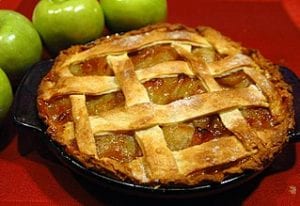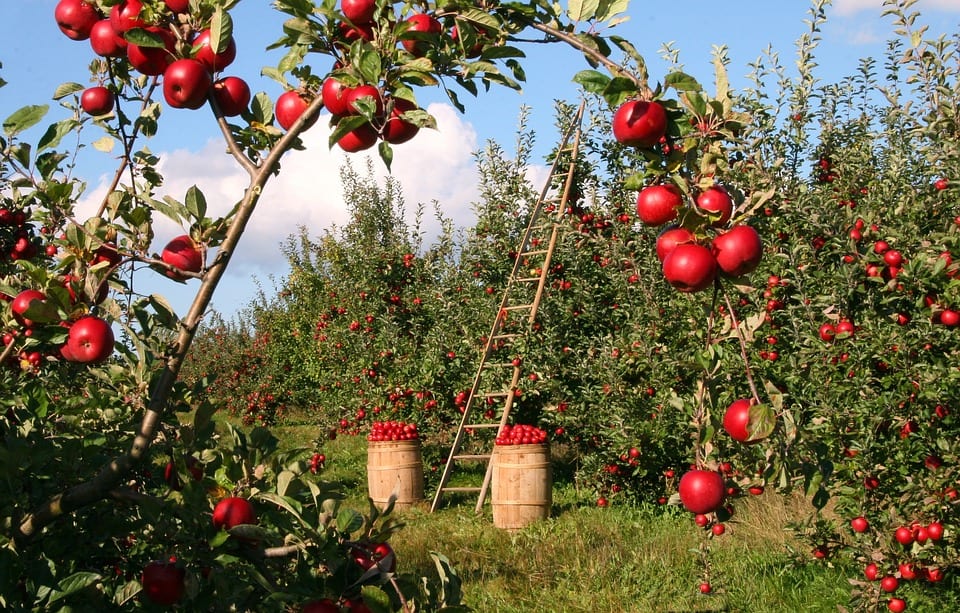What’s killing North America’s apple trees?
The climate crisis isn’t only a long emergency that future generations will have to endure, nor is it something that Greta Thunberg and her young peers will begin to experience decades after we’re gone. It’s here and now, and it’s already starting to make life more difficult. Due to recent Midwestern flooding and the European wildfires and drought, we can likely expect more expensive groceries in the coming months. More than that, though, are the slower, subtle yet profound changes taking place to our food system. Take apples, for example: because the climate is. Something is killing young apple trees (Malus pumila) across North America.
The apple trees started dying six years ago in Pennsylvania. Decline begins on a single limb; the leaves shrink, curl, and lose their color. Within weeks, the tree is dead. Then, adjacent trees show the same symptoms. Rows of trees die, for no apparent reason, or maybe a host of reasons.
Plant pathologist Kari Peter suspected it was a new disease affecting Malus pumila, but chemical treatments didn’t help. Research into Rapid Apple Decline (RAD) is ongoing, and while scientists haven’t turned up any single smoking gun, there are some promising leads. A paper published recently in the journal PLOS ONE explored some of the possible causes of RAD, such as extreme weather swings, pathogens, insect infestation, and even soil composition. Consensus seems to be coalescing around a hypothesis that the exceptionally cold winter weather in December 2014, subsequent heavy rain, and the 2016 drought made the apple trees more susceptible to maladies they would have been able to resist otherwise.
Another culprit is our monoculture farming model. Apple trees don’t breed true to the parent stock, and it can take years to find out if the apples produced by any particular sapling are edible (yet alone marketable quality). To get around that, commercial apple orchards rely almost exclusively on grafted trees. A cutting from a known variety of apple, such as Fuji or Honeycrisp, can be grown on rootstock from another Malus variety, perhaps with the goal of limiting the size of the fully grown tree for early bearing or ease of harvest. One common rootstock used for grafting dwarf trees is called Malling 9, or M.9. At a 2016 conference, growers agreed that RAD seemed to be afflicting trees grown on M.9 or related rootstock, and although the roots remained healthy, the trees were experiencing tissue death at the graft union along with the other symptoms of RAD.

Malus pumila may be as American as apple pie (and, like most of our ancestors, not native to North America), but we’ve lost iconic species before. Prior to the 1900s, the American chestnut, with trunks as massive as 10 feet in diameter and 130 feet tall, dominated the landscape. Their straight, strong, rot-resistant timber was used for everything from house and barn framing to cradles and caskets. Chestnuts were a staple food, tanneries used the bark, railroads spanned the continent on chestnut ties. Then, in 1904, the blight came. Author and tree nurturer Akiva Silver describes the sudden loss of this keystone species by comparing it to losing apples today. In a few generations, we’ve lost the cultural memory of the great chestnuts, and perhaps in a few generations it will be impossible to fully describe the impact that apples had on our diets, our economy, and even our stories.
The climate crisis is as complex as it is unavoidable, and potentially losing Malus pumila to the vicissitudes of unreliable and extreme weather is just one small sacrifice in a tsunami of changes unfolding more quickly than scientists expected. The losses we’ll mourn are more than the sum of rising food prices, social unrest, desertification, and the death of the oceans. Sure, our descendants, generations from now, will have found new ways of living that we can only begin to imagine. They may not even notice what they don’t have, the same way that life went on after the chestnuts died. Whether that is heartening or hopeless is something we must decide for ourselves.
Related: The Future of Coffee


Join the conversation!